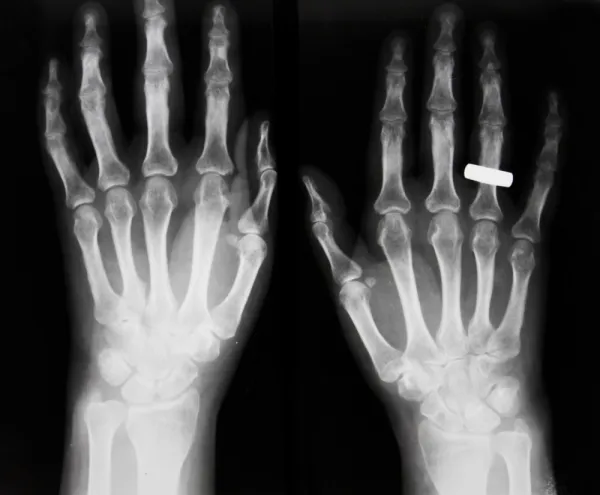Bone Density or DEXA Scan Coding: Tips to Help You Out

Check your LCDs to see if coverage is once every 2 years.
The restrictions Medicare sets for bone density tests can keep even the most conscientious coders guessing about whether they’ve met the medical necessity and frequency guidelines. Our experts offer real-world advice that will keep you on track and strengthen your chances of success.
Scenario: Your physician orders an axial skeleton DXA for an estrogen-deficient female patient at risk for osteoporosis. (Dual-energy x-ray absorptiometry [DXA] is the gold standard for measuring bone density.) You should report 77080 (Dual-energy X-ray absorptiometry [DXA], bone density study, 1 or more sites; axial skeleton [e.g., hips, pelvis, spine]) with diagnosis V82.81 (Special screening for osteoporosis), assuming your practice provided both the technical and professional components of the service. If only the technical component (TC) or professional component (26) was provided, then you will need to append the corresponding modifier to 77080.
ICD-10 tip: When your diagnosis coding system changes to ICD-10 in 2014, V82.81 will become Z13.820 (Encounter for screening for osteoporosis).
Tip 1: Gather the Supporting Documentation
Documentation for the bone scan must include an order from a physician or qualified non-physician practitioner who is treating the beneficiary and an interpretation of the test results (Medicare Benefit Policy Manual, Chapter 15, Section 80.5.4). Signing the machine printout doesn’t count as an interpretation.
The physician also needs to document a complete diagnosis. Medicare doesn’t offer a national list of covered ICD-9 codes, but it does state that an individual qualifies for coverage when she meets one of these conditions (Medicare Benefit Policy Manual, Chapter 15, Section 80.5.6):
· is estrogen-deficient and at risk for osteoporosis
· has vertebral abnormalities as demonstrated by an x-ray to be indicative of osteoporosis, osteopenia, or vertebral fracture
· is being monitored for FDA-approved osteoporosis drug efficacy
· is receiving (or expected to receive) glucocorticoid (steroid) therapy greater than or equal to an average of 5.0 mg of prednisone per day for more than three months
· has primary hyperparathyroidism.
“It is worth noting that while the first bullet above is gender specific (i.e. limited to females), the others may apply to either males or females,” points out Kent Moore, senior strategist for physician payment at the American Academy of Family Physicians in Leawood, Ks. “That shows that Medicare will cover bone density studies for men as well as women, if the coverage conditions apply.
Check your payer’s local coverage determination (LCD) for the specific ICD-9 codes it says support medical necessity. For example, Aetna lists several diagnoses that may prove medical necessity, such as 627.2 (Symptomatic menopausal or female climacteric states) and 733.90 (Disorder of bone and cartilage, unspecified).
ICD-10 change: Diagnosis 627.2 will become N95.1 (Menopausal and female climacteric states) under ICD-10. Code733.90 will become M89.9 (Disorder of bone, unspecified) and M94.9 (Disorder of cartilage, unspecified). You’ll choose the appropriate code based on whether the physician includes documentation of affected bone or cartilage.
Tip 2: Go With Documented Diagnosis
Only report the documented diagnosis — never choose a diagnosis simply because you know you’ll get paid for it.
Remember: You should always code results to the highest level of specificity. For example, for a woman who is postmenopausal and not taking hormones, you should report V49.81 (Asymptomatic postmenopausal status [age-related] [natural]). This would be reported in addition to V82.81, noted above.
ICD-10 check: When you begin coding with ICD-10, V49.81 will become Z78.0 (Asymptomatic menopausal state).
Tip 3: Get the Frequencies Straight
Medicare will pay for bone mass measurements on qualified individuals every two years.
Translation: Every two years means “at least 23 months have passed since the month” of the last covered bone mass measurement (Medicare Benefit Policy Manual, Chapter 15, Section 80.5.5). Medicare does offer exceptions to this frequency rule. Medicare may consider more frequent DXA scans when medically necessary under either of these circumstances:
· you're monitoring a patient on glucocorticoid therapy for more than three months
· you’re confirming baseline bone mass measurements to permit monitoring a patient in the future.
Other payers may allow similar exceptions to any frequency standards that they have.

